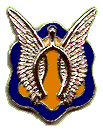

|
Story, photos by Pvt. Howard
Ketter The loud whistle and boom of explosives, the sound of small arms fire and the repetitive bang of a .50-caliber rifle clashed over the Pvt. Joseph P. Martinez Combined Arms Collective Training Facility at Fort Wainwright recently as Soldiers from the 6th Squadron, 17th Calvary Regiment, participated in the tactical portion of their traditional Spur Ride. A Spur Ride is a cavalry event held so Soldiers may earn their honorary Stetsons and spurs, said Maj. Michael McCurry, squadron training officer for the 6th Sqdn., 17th Cav. Soldiers who participate in the event must meet high standards within their unit just to compete, he explained. The spurs and Stetsons they strive to earn are the cavalry’s equivalent of the Expert Infantry Badge. “The spurs and Stetsons earned by Soldiers have quite a history behind them and they are highly respected by the Soldiers as signs of excellence. Spurs were originally granted to knights to represent the pinnacle of knighthood,” McCurry said. McMurry said the Stetson is a tradition held throughout U.S. cavalry units. Stetsons were originally worn by the 1st Squadron, 9th Cavalry Regiment, during the Vietnam War. For Soldiers to take part in the Spur Ride they must have spent at least six months in the unit and have been deployed or on a field training exercise, McMurry said. The Soldiers also have to score a minimum of 250 points on the Army Physical Fitness Test. Being proficient in their military occupational specialty, qualifying on their individual weapons and showing leadership within the unit all play a role in receiving a commander’s recommendation, which is also required for the event. Day one began with an equipment layout and inspection, followed by a two-hour physical training session. The spur riders were then led by the spur masters; senior non-commissioned, warrant and commissioned officer spur holders, in a nine-hour demonstration and walkthrough of the tactical portion of the Spur Ride. “We tried to make this a very structured event as well as train our Soldiers to the standard,” McCurry said. He played a role in the opposition force in the day two tactical exercise. Day two began at 5 a.m. with an alert sequence where Soldiers had to activate an alert roster. Then the spur riders engaged in a morning road march which ended with an equipment layout and inspection. After taking an APFT the Soldiers embarked on the nine-hour tactical exercise. Capt. Brendan Taylor, an armed reconnaissance helicopter pilot in Headquarters and Headquarters Troop, also a spur candidate, said the tactical course was mentally and physically tough, and that the training was good and demanding. “Spur holders are a tight-knit group, a brotherhood that symbolizes excellence, and I want to be a part of that,” Taylor said. “It’s something that every cavalry Soldier should aspire to obtain.” “This is a great training facility for urban operations,” said Spc. John C. Crow, D Troop. “Captain Taylor and I have one of the best squads, we’re all physically fit and focused on our goal,” said Crow, who was assistant squad leader to Taylor. “It started out rough but we just dusted off and pressed on” Crow said. He has been with 6th Sqdn., 17th Cav., for two years. Day two consisted of several tasks the Soldiers had to complete and ended with the Soldiers bivouacking in 10-man arctic tents. Day three consisted of more tasks, such as a written exam on 6th Sqdn., 17th Cav. history and an oral exam on the U.S. Army Alaska blue standards book. The final day ended with a squadron dining-in at the Princess Lodge in Fairbanks, where the successful Soldiers received their spurs and Stetsons. “These Soldiers will be honored spur holders, carrying on the tradition of the U.S. Army cavalry, showing leadership and excellence; representing the pinnacle of knighthood. They are at the pinnacle of Soldiering,” McCurry said. |
